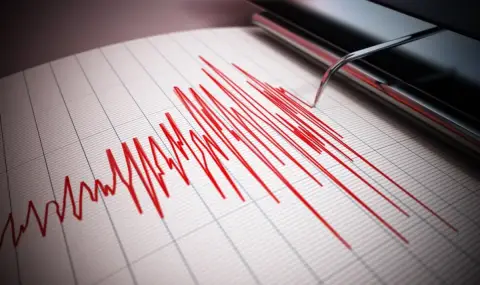For the territory of Turkey, which is a strong earthquake zone and after an event with a magnitude of 6.2 on the Richter scale, it can be said that the number of 260 secondary earthquakes of the aftershocks is currently normal. This was said on the air of Radio "Focus" by the head of the Department of Seismology at the National Institute of Geophysics, Geodesy and Geography at the Bulgarian Academy of Sciences, Assoc. Prof. Plamena Raykova.
"With such a strength of yesterday's event, we expected exactly such an intense series, which will continue over time and we will register them for more than a year.
It will be noticeable to people in the next few months, as it will subside over time, but maybe within 1 year there will be microshocks that will not be noticeable to people, but will be registered by the equipment“, she said.
According to her, the earthquake in the Sea of Marmara is right along the North Anatolian Fault, as Turkey itself is located on a microplate that has movement of several large plates.
This is not just a small structure, but a structure with a length of over 1500 km, the expert explained and added that an earthquake of great force has been predicted and expected for a long time in Turkey, "since historically from 1939 to 1999, earthquakes have been realized along the fault itself several devastating earthquakes precisely along this North Anatolian fault with a magnitude of over 7, with the last one in 1999 having a magnitude of over 7 and causing an enormous amount of damage and casualties in Izmit.“
"There are several seismic belts that carry the greatest seismicity worldwide, on a global scale, and the Balkan Peninsula is part of the Alpine-Himalayan seismic belt, which carries a high percentage of seismicity.
On the Balkan Peninsula there are boundaries between large tectonic plates that are constantly moving with each other, and this movement leads to the realization of earthquakes,“ she explained and added that the earthquakes in the Sea of Marmara and in Greece are independent of each other's foci, as Greece also has its own extremely intense seismicity, which creates many foci that can create earthquakes.
Bulgaria is also a seismic region, whose seismicity is not as strong as in our neighboring countries, but there are certainly regions that can also become active and moderate to strong activity is also observed there.
"There are several zones in Bulgaria. One is Krupnik-Kresna, the Sofia zone, Shabla, the Marishka region, a zone is the Plovdiv city region, for example, Gorna Oryahovitsa", added Assoc. Prof. Plamena Raykova.
The more populated and built-up the region is when a strong earthquake occurs, the higher the economic and social losses will be, Assoc. Prof. Raykova, but according to her, with reasonable construction and compliance with all standards, there should not be any strong effect and a high risk of casualties.
